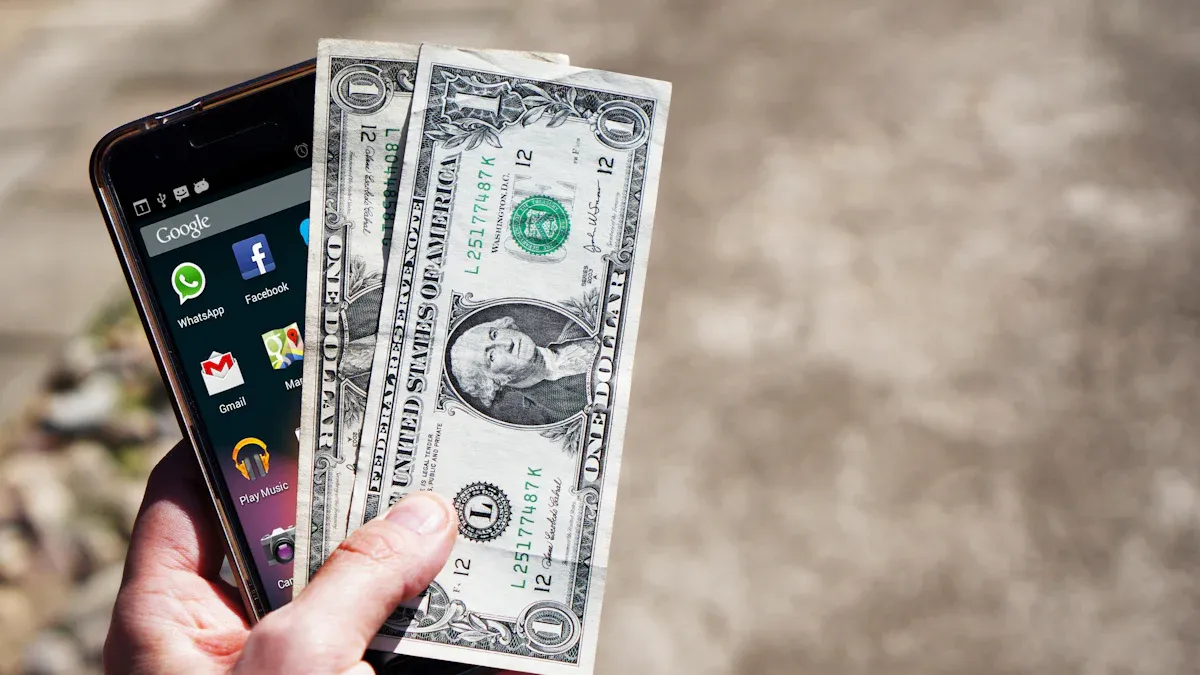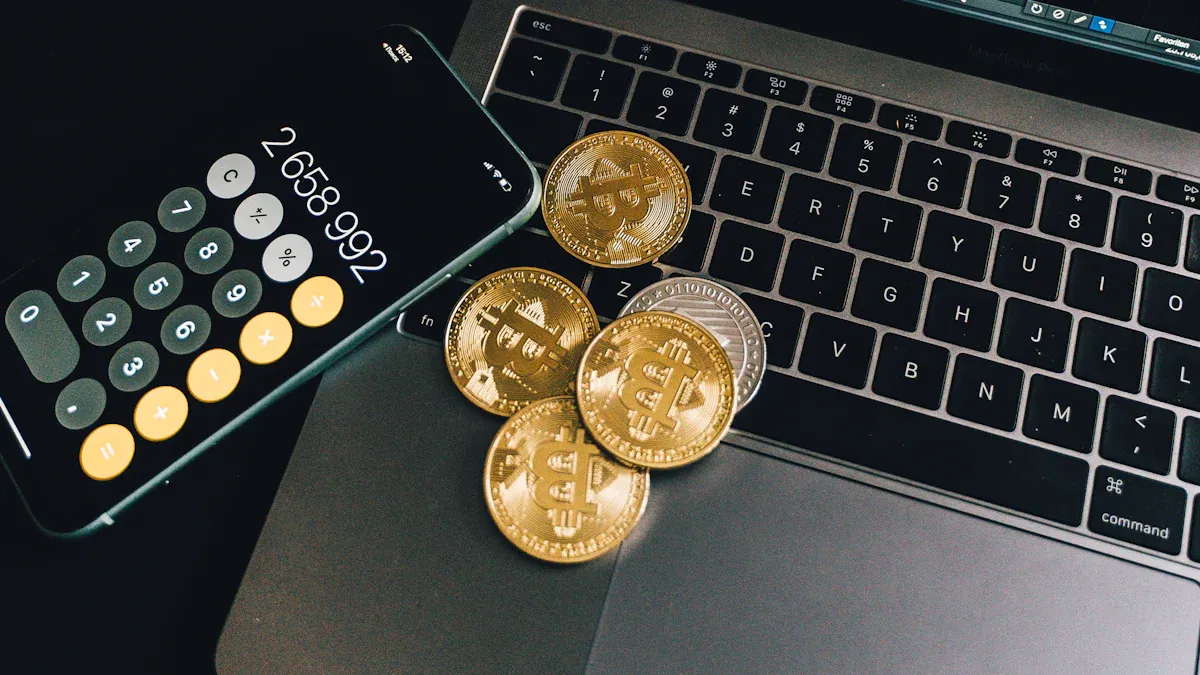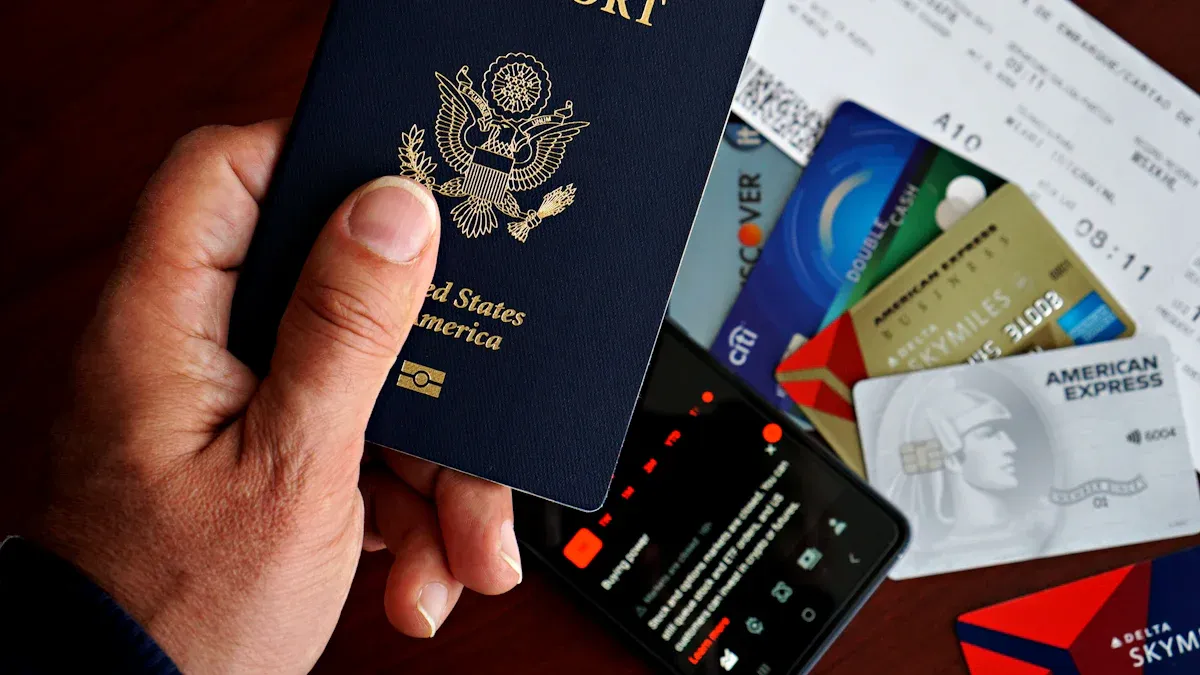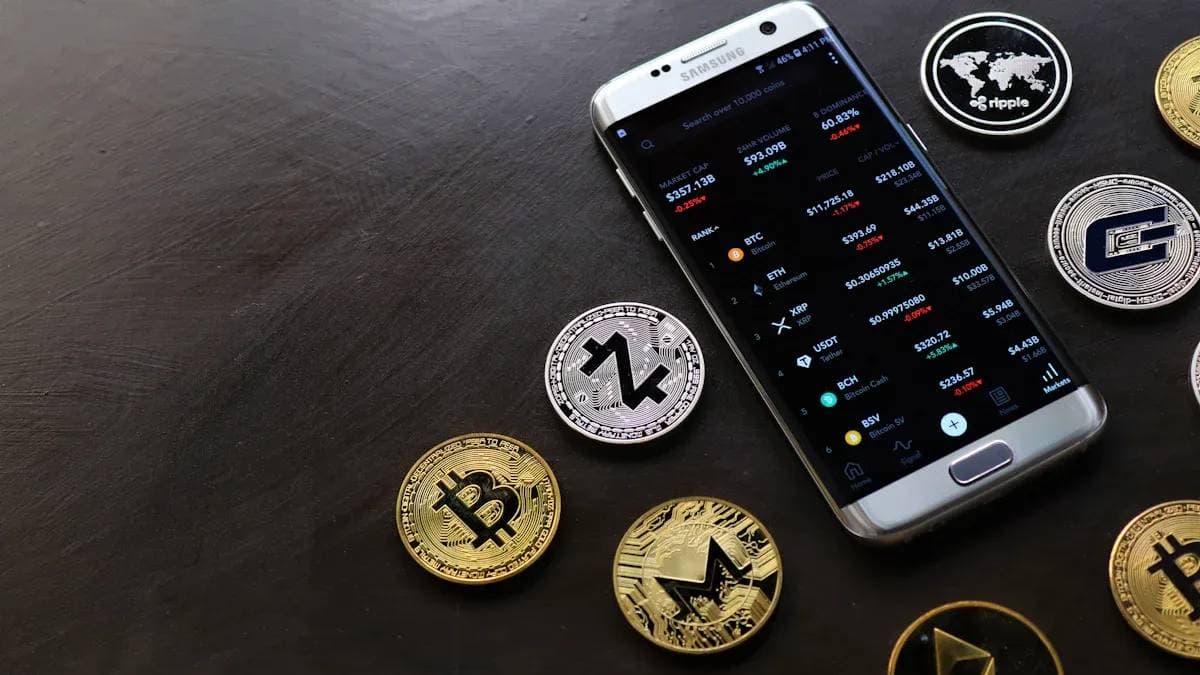- EasyCard
- Trade
- Help
- Announcement
- Academy
- SWIFT Code
- Iban Number
- Referral
- Customer Service
- Blog
- Creator
Cross-Border Transfers Too Expensive? USDT Helps You Save Money

Image Source: pexels
Are you still troubled by traditional bank cross-border transfers?
A single remittance often requires waiting 1 to 5 business days, and high handling fees make costs spiral out of control.
Now, USDT provides you with an efficient, low-cost solution. It is not only suitable for personal use but is also becoming the choice for many cross-border trade businesses. Master the right methods, and you can easily save substantial fees.
Key Points
- USDT transfer fees are very low, much cheaper than banks.
- USDT transfers are very fast, arriving in minutes.
- Choose the TRC-20 network to transfer USDT for the lowest fees.
- Carefully verify the address and network before transfer to avoid fund loss.
- Choose reliable platforms for buying and selling USDT and complete transactions quickly.
The Money-Saving Principle of USDT Cross-Border Transfers

Image Source: pexels
You might be curious how USDT exactly saves you money. The answer lies in disrupting three core aspects of traditional finance: fees, exchange rates, and speed.
Advantage 1: Significantly Reduce Handling Fees
Traditional bank cross-border transfer fees are extremely expensive. You not only pay a fixed wire transfer fee (about $25-$50), but intermediary banks may each charge a transit fee (about $15-$30). This means a single remittance can easily exceed $50 in costs.
USDT is completely different. Its transfer costs only relate to the chosen blockchain network, independent of the amount.
For example: When sending USDT via the TRC-20 network, the network fee is usually only $1-$2.
Let’s use a chart to intuitively compare the cost differences when sending $1,000:
| Transfer Method | Fee Components | Total Fee (Estimate) |
|---|---|---|
| Bank Wire (SWIFT) | Sending bank fee + Intermediary fees | $25 - $50 |
| USDT (TRC-20 Network) | Network fee (Gas Fee) | $1 - $2 |
This gap is clear at a glance. What you save is not just a few coffees but real transaction costs.
Advantage 2: Lock in Better Exchange Rates
Banks’ published exchange rates actually hide a “spread.” The bank’s “sell rate” is always higher than the “buy rate,” and this difference is your unnoticed loss during currency exchange.
Using USDT, you bypass this link. You trade directly with other users via C2C (Customer-to-Customer) markets. Prices here are determined by market supply and demand, very close to the real international mid-market rate. This means, from the currency exchange step, you’re already on a more cost-saving path.
Advantage 3: Achieve Near-Instant Fund Arrival
Have you experienced anxiously waiting for a remittance to arrive? Traditional bank wires usually take 3 to 5 business days. If encountering holidays, it takes even longer.
USDT transfer speed is revolutionary. On efficient networks like TRC-20 or BEP-20, a transfer is typically confirmed and arrives within minutes.
This speed is crucial in many scenarios. For example, you need to urgently pay an overseas supplier or quickly send living expenses to family studying abroad. USDT’s instant arrival ensures your funds reach when most needed, without missing opportunities due to bank inefficiency.
USDT Cross-Border Transfer Money-Saving Operation Guide
After understanding USDT’s money-saving principles, you must be eager to know how to operate. Don’t worry; follow these four steps to easily master this money-saving skill and ensure every penny is well spent.
Step 1: Optimize USDT Purchase Channels
Buying USDT is the first step in the process; choosing the right channel is crucial. Large, reputable trading platforms are your top choice; they usually offer C2C (Customer-to-Customer) trading markets, allowing you to buy USDT at rates close to market price.
On these platforms, you can choose diverse payment methods based on your needs. For example, platforms like Biyapay that support multiple payment methods usually offer the following options:
- Credit or Debit Card: Simplest operation, nearly instant arrival, suitable for speed-focused users.
- Bank Transfer (like SEPA): Usually lower fees but may take 1-3 business days, suitable for users less concerned with timing.
- E-Wallets (like Skrill, Neteller): Fast transactions, similar experience to bank cards.
- Apple Pay / Google Pay: Complete payments via mobile devices, convenient and quick.
Operation Advice: For first-time purchases, choose a platform supporting your local common payment methods. In C2C markets, always select merchants with high transaction volume and good ratings to ensure fund safety.
Step 2: Choose the Lowest-Fee Transfer Network
After buying USDT, the next step is transferring it to the recipient. Here, you face a key choice: which blockchain network to use for transfer? Different networks have vastly different fees and speeds.
Current mainstream USDT transfer networks include ERC-20, TRC-20, and BEP-20. Let’s look at their specific differences:
| Network | Transaction Speed | Transaction Fee (Estimate) | Features |
|---|---|---|---|
| TRC-20 (Tron) | Extremely fast, usually seconds | Extremely low, about $1 | 2025’s most cost-effective choice, ideal for frequent, small transfers |
| BEP-20 (BNB Chain) | Very fast, about 3 seconds | Low, usually under $1 | Fast speed, low fees, mature ecosystem |
| ERC-20 (Ethereum) | Slower, minutes | Higher, $5 - $20+ | Highest security, but expensive during congestion, not suitable for small transfers |
From the chart and data, it’s clear that the TRC-20 network, with its extremely high processing speed (up to 2000 transactions per second) and negligible transfer fees, has become the top choice for USDT cross-border transfers in 2025.
Important Reminder: Before transfer, you must confirm with the recipient which network their USDT receiving address is based on. Network types must match exactly, or your funds will be permanently lost. For example, you cannot send USDT on TRC-20 to an ERC-20 address.
Step 3: Plan the Best Withdrawal Path
Once the recipient receives USDT, the final step is exchanging it for local fiat (like USD, EUR). This step also has money-saving techniques.
Different trading platforms and withdrawal methods have varying fees and limits. For example, some platforms may have lower withdrawal fees for specific bank channels.
- C2C Selling: The most common way. The recipient can sell USDT directly to local buyers wanting to purchase on the platform’s C2C market, exchanging for local fiat. This usually has no platform fees, with rates determined by the market.
- Direct Platform Withdrawal: Some platforms support direct cryptocurrency-to-fiat conversion and bank withdrawal. Pay attention to withdrawal fees; some may charge 0.1% of the withdrawal amount (with min/max, e.g., min $30).
Planning Advice: Before large transfers, have the recipient research and test different platforms’ withdrawal fees and speeds. For example, try a small withdrawal (like $100) first to find the most economical and smooth path, avoiding unnecessary losses on large funds.
Extra Tip: Use USDT Staking to Earn Interest
If you don’t need to transfer funds immediately, held USDT can generate extra income. Many mainstream platforms offer USDT staking products, letting idle funds “work.”
These products are usually divided into “flexible” and “fixed” types:
- Flexible Staking: Funds can be deposited/withdrawn anytime, very flexible. Annual percentage yield (APY) usually fluctuates between 6% and 10%.
- Fixed Staking: Lock funds for a period (like 30, 90, 120 days) for higher returns. For example, on some platforms, 120-day USDT fixed staking products have APY up to 10.02%.
Risk Warning: While enjoying high yields, understand the risks. First is platform risk; choose reputable large platforms. Second is depeg risk; though USDT aims for 1:1 USD peg, in extreme conditions, price may briefly fluctuate. For example, USDC once briefly depegged to $0.87 due to reserve bank issues. Thus, assess your risk tolerance before staking.
USDT Transfer Security and Risk Avoidance

Image Source: pexels
Learning to save money is important, but securing funds is paramount. When using USDT for cross-border transfers, protect your digital assets like a bank account. Follow these four security tips to effectively avoid risks.
Security Tip 1: Screen Reputable Trading Platforms
Your first line of defense is choosing a safe, reliable trading platform. A reputable platform not only offers smoother experience but also provides solid asset protection.
Screen platforms with these criteria:
- Security Record: Any major security breaches?
- User Protection: Offers two-factor authentication (2FA), withdrawal whitelist?
- Compliance: Follows anti-money laundering (AML) and know-your-customer (KYC) regulations?
- Customer Service: Timely, professional responses?
Some top platforms invest heavily in security and are worth prioritizing:
| Exchange | Security Features Reference |
|---|---|
| Kraken | No major customer fund losses since 2011, excellent security reputation. |
| Coinbase | Complies with strict U.S. regulations, offers strong features including cold storage. |
| Binance | Established SAFU fund to compensate users in extreme cases. |
Security Tip 2: Repeatedly Verify Transfer Address
Unlike bank transfers, blockchain transactions cannot be reversed or changed once confirmed. Wrong address means permanent fund loss.
Core Principle: Don’t trust, verify. Before clicking “send,” fully copy-paste the address, then check beginning, middle, and end character by character. Also confirm with recipient that the network type (like TRC-20) matches exactly.
A very practical method is, before large transfers, send a tiny test amount (e.g., $1 USDT). Only after recipient confirms arrival, proceed with full amount.
Security Tip 3: Beware of C2C Transaction Scams
C2C transactions are convenient but easy targets for scammers. Common scams include:
- Fake Payment Proof: Scammers send fake bank transfer screenshots, urging you to release USDT.
- Refund Scam: Scammers pay with reversible methods, then reverse after you release USDT.
- Fake Support: Scammers impersonate platform support, using “account freeze” excuses to lure private transactions.
Fortunately, mainstream platforms offer escrow services. When selling USDT, the platform temporarily locks your coins. Only after you confirm receiving buyer’s fiat payment does the platform release USDT to them, greatly securing transactions.
Security Tip 4: Avoid Market Price Fluctuations
Though a stablecoin, USDT price may still have minor fluctuations due to extreme market sentiment (e.g., from $1.00 to $0.99 or $1.01). Holding too long may cause small exchange losses.
Best Strategy for Transfer Users: Quick in, quick out. Buy USDT and transfer immediately; recipient sells for local fiat soon after receipt. This minimizes exposure to price fluctuation risk.
In summary, with improving global regulations, such as Hong Kong expected to launch stablecoin legislation around 2025, USDT use is becoming more standardized. Stay vigilant, follow security guidelines, and confidently enjoy its convenience and cost benefits.
You’ve mastered optimizing processes and security to make USDT a powerful money-saving tool in 2025. Start with a small transfer to personally experience its huge advantages in cost and efficiency.
Important Reminder: Global regulations are improving; for example, FATF’s “Travel Rule” requires identity info for transactions over certain amounts. Before any operation, understand and comply with local laws to ensure fully compliant cross-border transfers.
FAQ
Is using USDT for transfers legal in mainland China?
You need to understand and comply with local laws and regulations. Cryptocurrency policies vary globally and change constantly. Before any transaction, confirm your actions comply with local legal requirements for compliant operations.
Does USDT’s price really not change?
USDT is designed for 1:1 USD peg. But in extreme market conditions, price may have minor fluctuations. Thus, we recommend a “quick in, quick out” strategy: transfer immediately after purchase to avoid price risk.
What is the minimum transfer amount?
USDT transfers have no minimum limit. You can transfer just $1.
Operation Advice: We strongly recommend testing with a small amount (e.g., $5 USDT) before large transfers to ensure the process is smooth.
Do I need to pay taxes on USDT transactions?
You need to declare gains from cryptocurrency transactions per local tax rules. Tax laws vary by country/region. Consult a professional tax advisor to fulfill tax obligations.
*This article is provided for general information purposes and does not constitute legal, tax or other professional advice from BiyaPay or its subsidiaries and its affiliates, and it is not intended as a substitute for obtaining advice from a financial advisor or any other professional.
We make no representations, warranties or warranties, express or implied, as to the accuracy, completeness or timeliness of the contents of this publication.




Contact Us
Company and Team
BiyaPay Products
Customer Services
BIYA GLOBAL LLC is a licensed entity registered with the U.S. Securities and Exchange Commission (SEC No.: 802-127417); a certified member of the Financial Industry Regulatory Authority (FINRA) (Central Registration Depository CRD No.: 325027); regulated by the Financial Industry Regulatory Authority (FINRA) and the U.S. Securities and Exchange Commission (SEC).
BIYA GLOBAL LLC is registered with the Financial Crimes Enforcement Network (FinCEN), an agency under the U.S. Department of the Treasury, as a Money Services Business (MSB), with registration number 31000218637349, and regulated by the Financial Crimes Enforcement Network (FinCEN).
BIYA GLOBAL LIMITED is a registered Financial Service Provider (FSP) in New Zealand, with registration number FSP1007221, and is also a registered member of the Financial Services Complaints Limited (FSCL), an independent dispute resolution scheme in New Zealand.



















